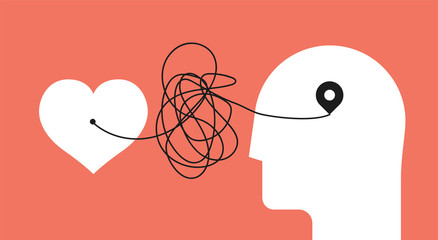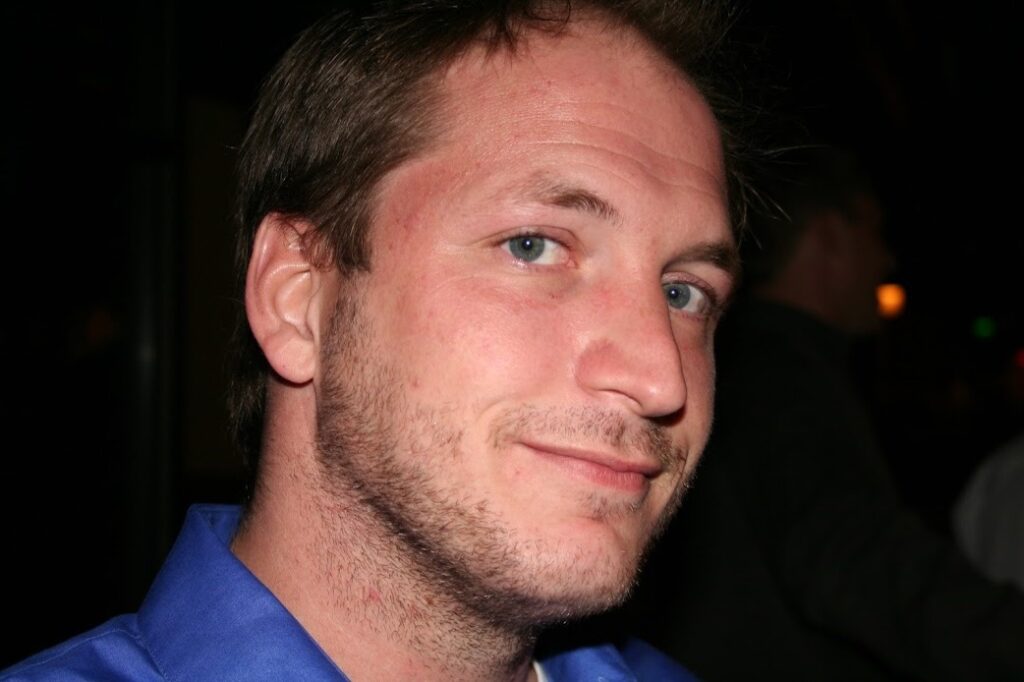
Steps YOU Can Take to Manage Anxiety and Depression in Recovery
Addiction is a unique disease in that it can be triggered in part by anxiety and depression, but it can also subsequently cause anxiety and depression during both active addiction and recovery. At Fellowship Hall we understand that when life beyond active addiction begins, those in recovery have to establish a true mental and emotional baseline in sobriety. Tal Fish, licensed Clinical Mental Health Counselor, and one of Fellowship Hall’s Extended Treatment Counselors says, “Patience is very important in the beginning. It won’t get better right away because the brain needs time to heal from the effects of active addiction. It may take some time for moods to improve.”
However, there are steps that you can take each day to manage these mental health disorders and foster successful, long-term recovery.
- Understand that you are not alone in your struggles.
The disease feeds on feelings of isolation and loneliness. Tal highlights the importance of understanding that what you’re going through is valid: “Co-occurring disorders (when someone experiences a mental illness and a substance use disorder at the same time) are common with people with substance use disorders. Many people cope with both anxiety and depression in recovery. The first and most important thing I want people in recovery to know is that they’re not alone, again, this is not uncommon. A lot of people suffering from substance use disorders self-medicate to cope with these symptoms caused by underlying mental health disorders.”
- Utilize your support network.
A crucial part of recovery is utilizing your support network. Allow yourself to open up in meetings and to your sponsor. Don’t be ashamed of your emotions. What you feel is valid and worth talking about with others. Chances are, someone else has experienced similar feelings during their own recovery. “There’s no shame in struggling with anxiety and depression. It is important to talk about how you feel and what you’re experiencing during recovery. Don’t be afraid to be honest about it and seek proper support,” Tal said. “Not addressing or tending to these emotions can be a relapse risk if they go un-managed.” Now, more than ever before, those in recovery have access to round-the-clock care and support via digital meeting platforms. Don’t forget to take a look at the resources on our website here: https://www.fellowshiphall.com/alumni-online-resources.php
- 360 Wellness
Anxiety and depression can be all-consuming. If you’ve experienced these emotions, you know that they impact us physically just as much as they do mentally. Simple tasks can become difficult and it’s easy to slip into a pattern of poor habits when struggling with these emotions. You can combat this by setting small, achievable positive goals. These goals don’t have to be massive overhauls or major life changing events–these wellness goals can be as simple as taking a walk three times a week, attending a meeting each afternoon, or calling a good friend. Just reflect on what you can do today to feel your best. Strive after something you can achieve, so that you can enjoy the rewarding feeling of completing a goal and keeping a promise to yourself.
- Don’t underestimate the power of a little “TLC”
That’s right TLC- tender, loving, (self) care! We know that if our body feels good, we most definitely feel much better. Some simple ways to practice self-care in recovery are:
- Nourish your body with fresh, healthy foods.
- Stay hydrated.
- Staying active (even just 30 minutes of light movement a day can make a massive difference!)
- Get a good night’s sleep. Sleep is a huge factor for mental well-being.
- Engage in ANY spiritual activity that fulfills and centers you.
- Review the 12-steps.
- Do things you enjoy. Connect with your passions, paint, sing, read, do yoga.
While self-care isn’t the ultimate cure for mental health disorders, it can be used as an effective and positive coping strategy. Discovering ways that make each day manageable and as enjoyable as possible are important for long-term recovery.
At Fellowship Hall, we’re working to constantly provide support and care both on-campus and digitally those in recovery. For more information, resources, and encouragement, ‘like’ the Fellowship Hall Facebook page and follow us on Instagram at @FellowshipHallNC.
 The results speak for themselves. Alternative treatment programs are as effective as traditional 12-step programs for alcohol recovery. These results have been identified thanks to Dr. Sarah Zemore’s 2018 research project, “A longitudinal study of the comparative efficacy of Women for Sobriety, LifeRing, SMART Recovery, and 12-step groups for those with AUD,” published in the Journal of Substance Abuse Treatment. The findings […]
The results speak for themselves. Alternative treatment programs are as effective as traditional 12-step programs for alcohol recovery. These results have been identified thanks to Dr. Sarah Zemore’s 2018 research project, “A longitudinal study of the comparative efficacy of Women for Sobriety, LifeRing, SMART Recovery, and 12-step groups for those with AUD,” published in the Journal of Substance Abuse Treatment. The findings […]
Register Now for RISE20 Virtual
NADCP
is thrilled to announce that registration for RISE20 Virtual is now open!
Membership and Registration
The RISE20 Virtual registration fee is $450 for NADCP members and $495 for non-members.
If you are currently registered for RISE20 and would like to attend RISE20 Virtual you do not need to re-register. You will be automatically registered for RISE20 Virtual at a reduced price of $450 for NADCP members and $495 for non-members. Paid registrants will be automatically refunded the price difference.
Click here to renew your membership to receive discounted registration and learn more about the benefits of NADCP membership. Your membership must be paid before you can receive the discounted member rate.
For
membership questions, email membership@allrise.org. For registration
inquiries, email registration@allrise.org.
Major Benefits to Going Virtual
Accessible via livestream on the above dates and on demand after, RISE20 Virtual will present new content addressing the impact of the COVID-19 pandemic on treatment courts, while still featuring your favorite speakers, such as David Best, Shannon Carey, Paul Cary, Michael Clark, Jermaine Galloway (“Tall Cop Says Stop”), Bridgett Ortega, Doug Marlowe, David Mee-Lee, MD, Brian Meyer, Terrence Walton, and many more!
The
dynamic RISE20 Virtual format provides major additional benefits, including the
ability for attendees to earn up to 26.25 education hours during the live event
and, for the first time ever, earn an additional 33.75 hours in on-demand
content—a total of up to 60 hours!
For more information, visit RISE20.org.
The post Register Now for RISE20 Virtual appeared first on NADCP.org.
Nothing has challenged my sobriety, sanity, or mom guilt as much as watching my teen daughter struggle with her own mental illness.

| Join NADCP in the next installment of our COVID-19 webinar series: Practical Guidance for Continuing Treatment, Supporting Recovery, and Preventing Recurrence/Relapse During the COVID-19 Global Pandemic
When: April 16, 3:00 p.m. EDT Summary: This webinar will outline pandemic-related risks to recovery and offer practice-based expert guidance on how the full treatment court team can mitigate those risks and improve participants’ prognosis and capacity to enter or continue in recovery. |
The post Webinar Today: Practical Guidance for Treatment During COVID-19 appeared first on NADCP.org.
Many of us have been forced into the role of homeschool “teacher” since our schools have been out of session due to COVID-19. It's not an easy task.
With nearly $290M of new funding for seven years to research institutions around the country, the National Institutes of Health renewed its commitment to the Adolescent Brain Cognitive Development (ABCD) Study, the largest long-term study of brain development and child health ever conducted in...
What are prescription opioids?
Opioids are a class of drugs naturally found in the opium poppy plant. Some prescription opioids are made from the plant directly, and others are made by scientists in labs using the same chemical structure. Opioids are often used as medicines because they contain chemicals that relax the body and can relieve pain. Prescription opioids are used mostly to treat moderate to severe pain, though some opioids can be used to treat coughing and diarrhea. Opioids can also make people feel very relaxed and "high" - which is why they are sometimes used for non-medical reasons. This can be dangerous because opioids can be highly addictive, and overdoses and death are common. Heroin is one of the world's most dangerous opioids, and is never used as a medicine in the United States.
Common names for opioids include Oxy, Percs, and Vikes.
What are common prescription opioids?
- hydrocodone (Vicodin®) oxycodone (OxyContin®, Percocet®)
- oxymorphone (Opana®)
- morphine (Kadian®, Avinza®)
- codeine
- fentanyl
How do people misuse prescription opioids?
Prescription opioids used for pain relief are generally safe when taken for a short time and as prescribed by a doctor, but they can be misused. People misuse prescription opioids by:
- taking the medicine in a way or dose other than prescribed
- taking someone else's prescription medicine
- taking the medicine for the effect it causes-to get high
When misusing a prescription opioid, a person can swallow the medicine in its normal form. Sometimes people crush pills or open capsules, dissolve the powder in water, and inject the liquid into a vein. Some also snort the powder.
How do prescription opioids affect the brain?
Opioids bind to and activate opioid receptors on cells located in many areas of the brain, spinal cord, and other organs in the body, especially those involved in feelings of pain and pleasure. When opioids attach to these receptors, they block pain signals sent from the brain to the body and release large amounts of dopamine throughout the body. This release can strongly reinforce the act of taking the drug, making the user want to repeat the experience.
What are some possible effects of prescription opioids on the brain and body?
In the short term, opioids can relieve pain and make people feel relaxed and happy. However, opioids can also have harmful effects, including:
- drowsiness
- confusion
- nausea
- constipation
- euphoria
- slowed breathing
Opioid misuse can cause slowed breathing, which can cause hypoxia, a condition that results when too little oxygen reaches the brain. Hypoxia can have short- and long-term psychological and neurological effects, including coma, permanent brain damage, or death. Researchers are also investigating the long-term effects of opioid addiction on the brain, including whether damage can be reversed.
What are the other health effects of opioid medications?
Older adults are at higher risk of accidental misuse or abuse because they typically have multiple prescriptions and chronic diseases, increasing the risk of drug-drug and drug-disease interactions, as well as a slowed metabolism that affects the breakdown of drugs. Sharing drug injection equipment and having impaired judgment from drug use can increase the risk of contracting infectious diseases such as HIV and from unprotected sex.
Prescription Opioids and Heroin
Prescription opioids and heroin are chemically similar and can produce a similar high. In some places, heroin is cheaper and easier to get than prescription opioids, so some people switch to using heroin instead. Data from 2011 showed that an estimated 4 to 6 percent who misuse prescription opioids switch to heroin1,3,4 and about 80 percent of people who used heroin first misused prescription opioids.1,3,4 More recent data suggest that heroin is frequently the first opioid people use. In a study of those entering treatment for opioid use disorder, approximately one-third reported heroin as the first opioid they used regularly to get high.5
This suggests that prescription opioid misuse is just one factor leading to heroin use. Read more about this intertwined problem in our Prescription Opioids and Heroin Research Report.
Can I take prescription opioids if I'm pregnant?
If a woman uses prescription opioids when she's pregnant, the baby could develop dependence and have withdrawal symptoms after birth. This is called neonatal abstinence syndrome, which can be treated with medicines. Use during pregnancy can also lead to miscarriage and low birth weight. Read more in the Substance Use in Women Research Report.
It can be difficult for a person with an opioid addiction to quit, but pregnant women who seek treatment have better outcomes than those who quit abruptly. Methadone and buprenorphine are the standard of care to treat opioid-dependent pregnant women. Methadone or buprenorphine maintenance combined with prenatal care and a comprehensive drug treatment program can improve many of the adverse outcomes associated with untreated opioid addiction. If a woman is unable to quit before becoming pregnant, treatment with methadone or buprenorphine during pregnancy improves the chances of having a healthier baby at birth.
In general, it is important to closely monitor women who are trying to quit drug use during pregnancy and to provide treatment as needed.
Tolerance vs. Dependence vs. Addiction
Long-term use of prescription opioids, even as prescribed by a doctor, can cause some people to develop a tolerance, which means that they need higher and/or more frequent doses of the drug to get the desired effects.
Drug dependence occurs with repeated use, causing the neurons to adapt so they only function normally in the presence of the drug. The absence of the drug causes several physiological reactions, ranging from mild in the case of caffeine, to potentially life threatening, such as with heroin. Some chronic pain patients are dependent on opioids and require medical support to stop taking the drug.
Drug addiction is a chronic disease characterized by compulsive, or uncontrollable, drug seeking and use despite harmful consequences and long-lasting changes in the brain. The changes can result in harmful behaviors by those who misuse drugs, whether prescription or illicit drugs.
Can a person overdose on prescription opioids?
Yes, a person can overdose on prescription opioids. An opioid overdose occurs when a person uses enough of the drug to produce life-threatening symptoms or death. When people overdose on an opioid medication, their breathing often slows or stops. This can decrease the amount of oxygen that reaches the brain, which can result in coma, permanent brain damage, or death.
How can an opioid overdose be treated?
If you suspect someone has overdosed, the most important step to take is to call 911 so he or she can receive immediate medical attention. Once medical personnel arrive, they will administer naloxone. Naloxone is a medicine that can treat an opioid overdose when given right away. It works by rapidly binding to opioid receptors and blocking the effects of opioid drugs. Naloxone is available as an injectable (needle) solution, a hand-held auto-injector (EVZIO®), and a nasal spray (NARCAN® Nasal Spray).
Some states have passed laws that allow pharmacists to dispense naloxone without a personal prescription. This allows friends, family, and others in the community to use the auto-injector and nasal spray versions of naloxone to save someone who is overdosing.
Read more on our Naloxone webpage.
Can use of prescription opioids lead to addiction?
Yes, repeated misuse of prescription opioids can lead to a substance use disorder (SUD), a medical illness which ranges from mild to severe and from temporary to chronic. Addiction is the most severe form of an SUD. An SUD develops when continued misuse of the drug changes the brain and causes health problems and failure to meet responsibilities at work, school, or home.
People addicted to an opioid medication who stop using the drug can have severe withdrawal symptoms that begin as early as a few hours after the drug was last taken. These symptoms include:
- muscle and bone pain
- sleep problems
- diarrhea and vomiting
- cold flashes with goose bumps
- uncontrollable leg movements
- severe cravings
These symptoms can be extremely uncomfortable and are the reason many people find it so difficult to stop using opioids. There are medicines being developed to help with the withdrawal process, including lofexidine, a non-opioid medicine designed to reduce opioid withdrawal symptoms that was approved by the U.S. Food and Drug Administration (FDA) in 2018. The FDA has also approved sale of a device, NSS-2 Bridge, that can help ease withdrawal symptoms. The NSS-2 Bridge is a small electrical nerve stimulator placed behind the person’s ear, that can be used for up to five days during the acute withdrawal phase.
What type of treatment can people get for addiction to prescription opioids?
A range of treatments including medicines and behavioral therapies are effective in helping people with opioid addiction.
Two medicines, buprenorphine and methadone, work by binding to the same opioid receptors in the brain as the opioid medicines, reducing cravings and withdrawal symptoms. Another medicine, naltrexone, blocks opioid receptors and prevents opioid drugs from having an effect.
Behavioral therapies for addiction to prescription opioids help people modify their attitudes and behaviors related to drug use, increase healthy life skills, and persist with other forms of treatment, such as medication. Some examples include, cognitive behavioral therapy which helps modify the patient's drug use expectations and behaviors, and also effectively manage triggers and stress. Multidimensional family therapy, developed for adolescents with drug use problems, addresses a range of personal and family influences on one's drug use patterns and is designed to improve overall functioning. These behavioral treatment approaches have proven effective, especially when used along with medicines. Read more about drug addiction treatment in our Treatment Approaches for Drug Addiction DrugFacts.
Points to Remember
- Prescription opioids are used mostly to treat moderate to severe pain, though some opioids can be used to treat coughing and diarrhea.
- People misuse prescription opioids by taking the medicine in a way other than prescribed, taking someone else's prescription, or taking the medicine to get high. When misusing a prescription opioid, a person may swallow, inject, or snort the drug.
- Opioids bind to and activate opioid receptors on cells located in the brain, spinal cord, and other organs in the body, especially those involved in feelings of pain and pleasure, and can strongly reinforce the act of taking the drug, making the user want to repeat the experience.
- People who use prescription opioids can feel relaxed and happy, but also experience drowsiness, confusion, nausea, constipation, and slowed breathing.
- Prescription opioids have effects similar to heroin. While prescription opioid misuse is a risk factor for starting heroin use, only a small fraction of people who misuse opioid pain relievers switch to heroin.
- A person can overdose on prescription opioids. Naloxone is a medicine that can treat an opioid overdose when given right away.
- Prescription opioid use, even when used as prescribed by a doctor can lead to a substance use disorder, which takes the form of addiction in severe cases. Withdrawal symptoms include muscle and bone pain, sleep problems, diarrhea and vomiting, and severe cravings.
- A range of treatments including medicines and behavioral therapies are effective in helping people with an opioid use disorder.
Learn More
For more information about opioid medications, see our:
References
- Muhuri PK, Gfroerer JC, Davies MC. Associations of Nonmedical Pain Reliever Use and Initiation of Heroin Use in the United States. Rockville, MD: Substance Abuse and Mental Health Services Administration; 2013. https://www.samhsa.gov/data/sites/default/files/DR006/DR006/nonmedical-pain-reliever-use-2013.htm. Accessed May 13, 2016.
- Cicero TJ, Ellis MS, Surratt HL, Kurtz SP. The Changing Face of Heroin Use in the United States: A Retrospective Analysis of the Past 50 Years. JAMA Psychiatry. 2014;71(7):821-826. doi:10.1001/jamapsychiatry.2014.366.
- Carlson RG, Nahhas RW, Martins SS, Daniulaityte R. Predictors of transition to heroin use among non-opioid dependent illicit pharmaceutical opioid users: A natural history study. Drug Alcohol Depend. 2016;160:127-134. doi:10.1016/j.drugalcdep.2015.12.026.
- Cicero TJ, Ellis MS, Kasper ZA. Increased use of heroin as an initiating opioid of abuse. Addict Behav. 2017 Nov;74:63-66. doi: 10.1016/j.addbeh.2017.05.030. Epub 2017 May 23. PubMed PMID: 28582659. https://www.ncbi.nlm.nih.gov/pubmed/28582659
This publication is available for your use and may be reproduced in its entirety without permission from NIDA. Citation of the source is appreciated, using the following language: Source: National Institute on Drug Abuse; National Institutes of Health; U.S. Department of Health and Human Services.

